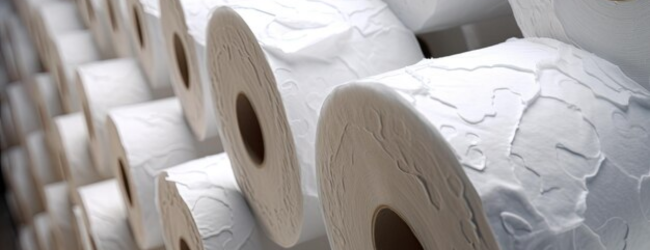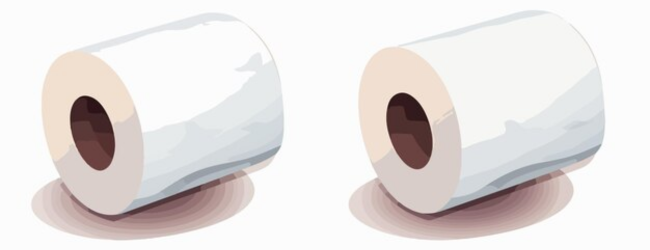Table of contents
The demand for hygiene products, especially toilet paper, is steadily increasing in India, driven by rising awareness of sanitation and changing lifestyle preferences. This presents a lucrative opportunity for entrepreneurs looking to enter the manufacturing sector. Starting a toilet paper manufacturing business can be a profitable venture if executed strategically. This guide provides a step-by-step roadmap, incorporating essential SEO practices, to help you navigate this industry successfully.
Here’s How You Can Start Your Toilet Paper Manufacturing Business
1. Market Research and Feasibility Study

- Understanding the Market:
- Market Size and Growth:
- India’s hygiene market is experiencing a significant surge due to increased awareness of sanitation, especially in urban areas. The rise of organized retail and e-commerce is also contributing to this growth.
- Analyze market research reports from organizations like Nielsen, Statista, and IBEF to get precise figures on market size, growth rates, and trends.
- Example: Reports indicate that the Indian hygiene market is growing at a CAGR of around 10-15%, with toilet paper being a substantial segment.
- Target Audience:
- Households: Consider varying income levels and preferences. Urban households tend to prefer higher-quality, multi-ply toilet paper.
- Commercial Establishments: Hotels, restaurants, hospitals, and offices require bulk supplies. Understand their specific needs regarding quality and quantity.
- Institutional Sales: Government institutions and large corporations represent a significant market segment.
- Competitive Landscape:
- Identify major players and their market share. Analyze their pricing strategies, product offerings, and distribution networks.
- Identify gaps in the market that you can exploit, such as niche products or underserved regions.
- Example: While large brands dominate urban areas, smaller regional players often cater to rural and semi-urban markets with affordable options.
- Market Size and Growth:
- Feasibility Study (Detailed):
- Financial Viability:
- Create a detailed financial model that includes startup costs, operating expenses, and revenue projections.
- Conduct a break-even analysis to determine the sales volume required to cover costs.
- Calculate the return on investment (ROI) and payback period to assess the profitability of the venture.
- Raw Material Availability and Cost:
- Explore various sources of pulp, including domestic suppliers and imports.
- Analyze the price fluctuations of pulp and develop strategies to mitigate risks.
- Consider using recycled paper to reduce costs and promote sustainability.
- Regulatory Requirements:
- Obtain necessary licenses and permits, including business registration, GST registration, and environmental clearances.
- Comply with quality standards set by the Bureau of Indian Standards (BIS).
- Example: Familiarize yourself with regulations related to waste disposal and pollution control.
- Financial Viability:
2. Business Plan Development
- Executive Summary:
- Clearly state your business’s mission, vision, and key objectives.
- Highlight your competitive advantages and unique selling propositions.
- Company Description:
- Provide details about your legal structure (sole proprietorship, partnership, private limited company).
- Describe your management team and their experience.
- Market Analysis:
- Present a comprehensive analysis of the market, including market size, growth trends, and target audience.
- Identify key market drivers and challenges.
- Products and Services:
- Specify the types of toilet paper you will offer, including variations in ply, size, and packaging.
- Consider offering value-added products, such as scented or embossed toilet paper.
- Marketing and Sales Strategy:
- Develop a detailed marketing plan that includes branding, advertising, and promotional activities.
- Outline your sales strategy, including distribution channels and customer relationship management.
- Financial Projections:
- Prepare detailed financial statements, including income statements, balance sheets, and cash flow statements.
- Include sensitivity analysis to assess the impact of changes in key variables.
- Operational Plan:
- Describe the manufacturing process in detail, including equipment requirements and quality control measures.
- Develop a supply chain management plan to ensure timely delivery of raw materials and finished products.
3. Setting Up the Manufacturing Unit

- Location Selection:
- Consider factors such as proximity to raw material sources, transportation infrastructure, and labor availability.
- Explore industrial parks or special economic zones (SEZs) that offer incentives for manufacturing businesses.
- Machinery and Equipment:
- Research different machinery suppliers and compare their prices and quality.
- Invest in reliable and efficient machinery to ensure smooth production.
- Establish a maintenance plan to minimize downtime.
- Raw Material Sourcing:
- Establish long-term relationships with reliable suppliers to ensure a consistent supply of raw materials.
- Explore options for sustainable sourcing of pulp.
- Licensing and Permits:
- Consult with local authorities and industry experts to ensure compliance with all regulatory requirements.
- Obtain necessary environmental clearances and safety certifications.
💡 Pro Tip: If you want to start a Manufacturing Business but have too many doubts, connect with a Manufacturing Business expert from Boss Wallah for guidance – https://bw1.in/1116
4. Manufacturing Process
- Pulp Preparation:
- Explain the process of converting raw pulp into a paper web, including cleaning, bleaching, and refining.
- Embossing:
- Describe the embossing process and its impact on the texture and softness of the toilet paper.
- Slitting and Rewinding:
- Explain how the paper web is slit into desired widths and rewound into rolls.
- Packaging:
- Describe the packaging process, including labeling, sealing, and palletizing.
- Quality Control:
- Implement rigorous quality control measures at each stage of the manufacturing process to ensure consistent product quality.
5. Marketing and Sales Strategy

- Distribution Channels:
- Develop a multi-channel distribution strategy to reach a wider audience.
- Explore partnerships with e-commerce platforms and online retailers.
- Branding and Promotion:
- Develop a strong brand identity that resonates with your target audience.
- Utilize digital marketing tools, such as social media and search engine optimization, to promote your brand.
- Example: create social media campaigns that show the quality and the softness of your product.
- Pricing Strategy:
- Develop a competitive pricing strategy that balances profitability and market share.
- Offer discounts and promotions to attract customers.
ALSO READ | Start Real Estate Business With Zero Investment in 8 Simple Steps
6. Financial Management
- Startup Costs:
- Create a detailed budget that includes all startup expenses.
- Explore funding options, such as bank loans, government grants, and venture capital.
- Operating Expenses:
- Develop a budget for ongoing operating expenses, such as labor, utilities, and marketing.
- Revenue Projections:
- Develop realistic revenue projections based on market analysis and sales forecasts.
- Funding Options:
- Mudra Yojna, and other government schemes.
- Private bank loans.
- Venture capital for larger operations.
Factors Influencing Profit Margins

- Scale of Operation:
- Large-scale manufacturers with economies of scale tend to have higher profit margins due to bulk purchasing of raw materials and efficient production processes.
- Small-scale manufacturers may have lower margins initially but can increase them by focusing on niche markets or local distribution.
- Raw Material Costs:
- The price of pulp, the primary raw material, fluctuates. Effective sourcing and cost management are crucial.
- Using recycled paper can reduce costs but may affect product quality and pricing.
- Product Quality:
- Higher-quality, multi-ply, or specialty toilet paper commands higher prices and profit margins.
- Lower-quality, single-ply products have lower margins but may appeal to a wider market.
- Distribution and Sales:
- Direct sales to large clients (hotels, hospitals) or bulk sales to wholesalers can increase margins.
- Retail sales through distributors or online platforms involve additional costs and may reduce margins.
- Operational Efficiency:
- Minimizing waste, optimizing production processes, and controlling labor costs are essential for maximizing profits.
- Branding and Marketing:
- Strong branding and effective marketing can create premium products that justify higher prices.
General Profit Margin Estimates:
- Wholesale: Profit margins for wholesale sales can range from 15% to 20%.
- Retail: Retail sales may yield higher margins, typically between 20% and 25%.
- It is very important to keep in mind that these are estimates, and that many factors can change the actual profit margin.
Key Considerations:
- Cost Control: Careful management of raw material costs, production expenses, and overhead is vital.
- Market Analysis: Understanding market demand, pricing trends, and competitor strategies is essential for setting competitive prices.
- Efficiency: Optimizing production processes to minimize waste and maximize output is critical for profitability.
Need Expert Guidance?
Starting a business can be challenging, but you don’t have to do it alone! At Boss Wallah, our 2,000+ business experts are ready to provide valuable insights and guidance. Whether you need help with marketing, finance, sourcing, or any other area of any business, our business experts are here to help you succeed- https://bw1.in/1116
Confused about Which Business to Start?
Want to start your own business but unsure which one to choose? Explore Boss Wallah, where you’ll find 500+ courses by successful business owners, featuring practical, step-by-step guides on starting and growing various businesses. Find your perfect business idea today – https://bw1.in/1111
Conclusion
The toilet paper manufacturing business presents a significant opportunity in India. By conducting thorough market research, developing a robust business plan, and implementing effective marketing strategies, you can establish a successful and profitable venture. Adhering to SEO best practices will ensure your online presence attracts the right audience and drives business growth.
Frequently Asked Questions (FAQs)
- What is the initial investment required to start a toilet paper manufacturing business?
- The initial investment can range from ₹10 lakhs to ₹50 lakhs, depending on the scale of operation and the type of machinery used.
- What are the essential raw materials required?
- The primary raw material is pulp, which can be sourced from wood or recycled paper.
- What licenses and permits are needed?
- You will need a business registration, GST registration, and permits from local authorities, along with environmental clearances.
- What is the profit margin in this business?
- Profit margins can vary, but typically range from 15% to 30%, depending on efficiency and sales volume.
- How can I market my products effectively?
- Utilize a combination of direct sales, online marketing, and partnerships with retailers and distributors.
- What are the key factors for success in this business?
- Quality control, efficient production, strong marketing, and competitive pricing.
- Is there any government support for small-scale manufacturing businesses in India?
- Yes, schemes like Mudra Yojana offer financial assistance to small and medium enterprises.
- What are the different types of toilet paper I can produce?
- You can produce single, double, or multi ply paper, scented, colored, and various sized rolls.


